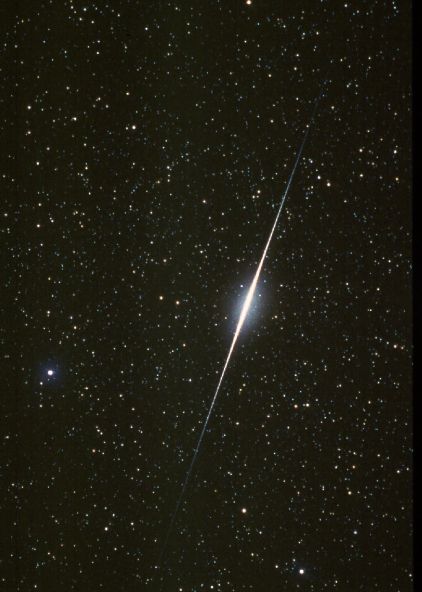Explanation: While hunting for meteors in the night sky above the White Mountains near Bishop, California, astrophotographer James Young instead captured this brilliant celestial apparition. Recorded near twilight on August 13, the bright streak is not the flash of a meteor trail but sunlight glinting from a satellite. The satellite, Iridium 52, is one of a constellation of Iridium digital communication satellites in Earth orbit known for producing stunning, predictable "flares" as they momentarily reflect sunlight from shiny antenna surfaces. For well placed observers, the peak brightness of this Iridium satellite flare reached about -6 magnitude, not quite as bright as the half illuminated moon. At magnitude 2.5, the bright star at the left is Alpha Pegasi, a star in the constellation Pegasus.
1999 2000 2001 2002 2003 2004 2005 2006 2007 2008 2009 2010 2011 2012 2013 2014 2015 2016 2017 2018 2019 2020 2021 2022 2023 2024 2025 |
Январь Февраль Март Апрель Май Июнь Июль Август Сентябрь Октябрь Ноябрь Декабрь |
NASA Web Site Statements, Warnings, and Disclaimers
NASA Official: Jay Norris. Specific rights apply.
A service of: LHEA at NASA / GSFC
& Michigan Tech. U.
|
Публикации с ключевыми словами:
Метеор - meteor - Iridium sattellite - спутники Иридиум - вспышки спутников
Публикации со словами: Метеор - meteor - Iridium sattellite - спутники Иридиум - вспышки спутников | |
См. также:
Все публикации на ту же тему >> | |
